Grape Seed Proanthocyanidin Extract Ameliorates Cardiac Remodelling After Myocardial Infarction Through PI3K/AKT Pathway in Mice
- PMID: 33343353
- PMCID: PMC7747856
- DOI: 10.3389/fphar.2020.585984
Grape Seed Proanthocyanidin Extract Ameliorates Cardiac Remodelling After Myocardial Infarction Through PI3K/AKT Pathway in Mice
Abstract
Myocardial infarction is one of the most serious fatal diseases in the world, which is due to acute occlusion of coronary arteries. Grape seed proanthocyanidin extract (GSPE) is an active compound extracted from grape seeds that has anti-oxidative, anti-inflammatory and anti-tumor pharmacological effects. Natural products are cheap, easy to obtain, widely used and effective. It has been used to treat numerous diseases, such as cancer, brain injury and diabetes complications. However, there are limited studies on its role and associated mechanisms in myocardial infarction in mice. This study showed that GSPE treatment in mice significantly reduced cardiac dysfunction and improved the pathological changes due to MI injury. In vitro, GSPE inhibited the apoptosis of H9C2 cells after hypoxia culture, resulting in the expression of Bax decreased and the expression of Bcl-2 increased. The high expression of p-PI3K and p-AKT was detected in MI model in vivo and in vitro. The use of the specific PI3K/AKT pathway inhibitor LY294002 regressed the cardio-protection of GSPE. Our results showed that GSPE could improve the cardiac dysfunction and remodeling induced by MI and inhibit cardiomyocytes apoptosis in hypoxic conditions through the PI3K/AKT signaling pathway.
Keywords: apoptosis; cardiac function; grape seed proanthocyanidin extract; myocardial fibrosis; myocardial infarction; pi3k/akt pathway.
Copyright © 2020 Ruan, Jin, Zeng, Ren, Xie, Ji, Wu, Wu and Li.
Conflict of interest statement
The authors declare that the research was conducted in the absence of any commercial or financial relationships that could be construed as a potential conflict of interest.
Figures
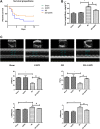
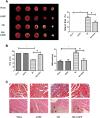
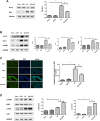

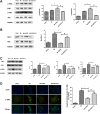
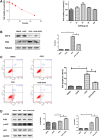
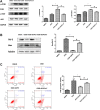
Similar articles
-
Grape seed proanthocyanidin extract ameliorates cisplatin-induced testicular apoptosis via PI3K/Akt/mTOR and endoplasmic reticulum stress pathways in rats.J Food Biochem. 2021 Jun 21:e13825. doi: 10.1111/jfbc.13825. Online ahead of print. J Food Biochem. 2021. PMID: 34152018
-
Grape seed proanthocyanidin extract reverses multidrug resistance in HL-60/ADR cells via inhibition of the PI3K/Akt signaling pathway.Biomed Pharmacother. 2020 May;125:109885. doi: 10.1016/j.biopha.2020.109885. Epub 2020 Jan 30. Biomed Pharmacother. 2020. PMID: 32007917
-
Grape seed extract proanthocyanidin antagonizes aristolochic acid I-induced liver injury in rats by activating PI3K-AKT pathway.Toxicol Mech Methods. 2023 Feb;33(2):131-140. doi: 10.1080/15376516.2022.2103479. Epub 2022 Jul 27. Toxicol Mech Methods. 2023. PMID: 35850572
-
Grape seed proanthocyanidins protect cardiomyocytes from ischemia and reperfusion injury via Akt-NOS signaling.J Cell Biochem. 2009 Jul 1;107(4):697-705. doi: 10.1002/jcb.22170. J Cell Biochem. 2009. PMID: 19388003
-
Molecular mechanisms of cardioprotection by a novel grape seed proanthocyanidin extract.Mutat Res. 2003 Feb-Mar;523-524:87-97. doi: 10.1016/s0027-5107(02)00324-x. Mutat Res. 2003. PMID: 12628506 Review.
Cited by
-
Proanthocyanidins Protect Against Cadmium-Induced Diabetic Nephropathy Through p38 MAPK and Keap1/Nrf2 Signaling Pathways.Front Pharmacol. 2022 Jan 3;12:801048. doi: 10.3389/fphar.2021.801048. eCollection 2021. Front Pharmacol. 2022. PMID: 35046823 Free PMC article.
-
Oxidative Stress as a Therapeutic Target of Cardiac Remodeling.Antioxidants (Basel). 2022 Nov 30;11(12):2371. doi: 10.3390/antiox11122371. Antioxidants (Basel). 2022. PMID: 36552578 Free PMC article. Review.
-
Uncovering the Effect and Mechanism of Rhizoma Corydalis on Myocardial Infarction Through an Integrated Network Pharmacology Approach and Experimental Verification.Front Pharmacol. 2022 Jul 22;13:927488. doi: 10.3389/fphar.2022.927488. eCollection 2022. Front Pharmacol. 2022. PMID: 35935870 Free PMC article.
-
Bioactive Compounds from Plant Origin as Natural Antimicrobial Agents for the Treatment of Wound Infections.Int J Mol Sci. 2024 Feb 8;25(4):2100. doi: 10.3390/ijms25042100. Int J Mol Sci. 2024. PMID: 38396777 Free PMC article. Review.
-
Review of Chinese medicine intervention in PI3K/AKT pathway to regulate fibrosis.Medicine (Baltimore). 2025 Jul 11;104(28):e42957. doi: 10.1097/MD.0000000000042957. Medicine (Baltimore). 2025. PMID: 40660593 Free PMC article. Review.
References
-
- Abbruzzese G., Morón-Oset J., Díaz-Castroverde S., García-Font N., Roncero C., López-Muñoz F., et al. (2020). Neuroprotection by phytoestrogens in the model of deprivation and resupply of oxygen and glucose in vitro: the contribution of autophagy and related signaling mechanisms. Antioxidants 9 (6), 545 10.3390/antiox9060545 - DOI - PMC - PubMed
LinkOut - more resources
Full Text Sources
Research Materials

